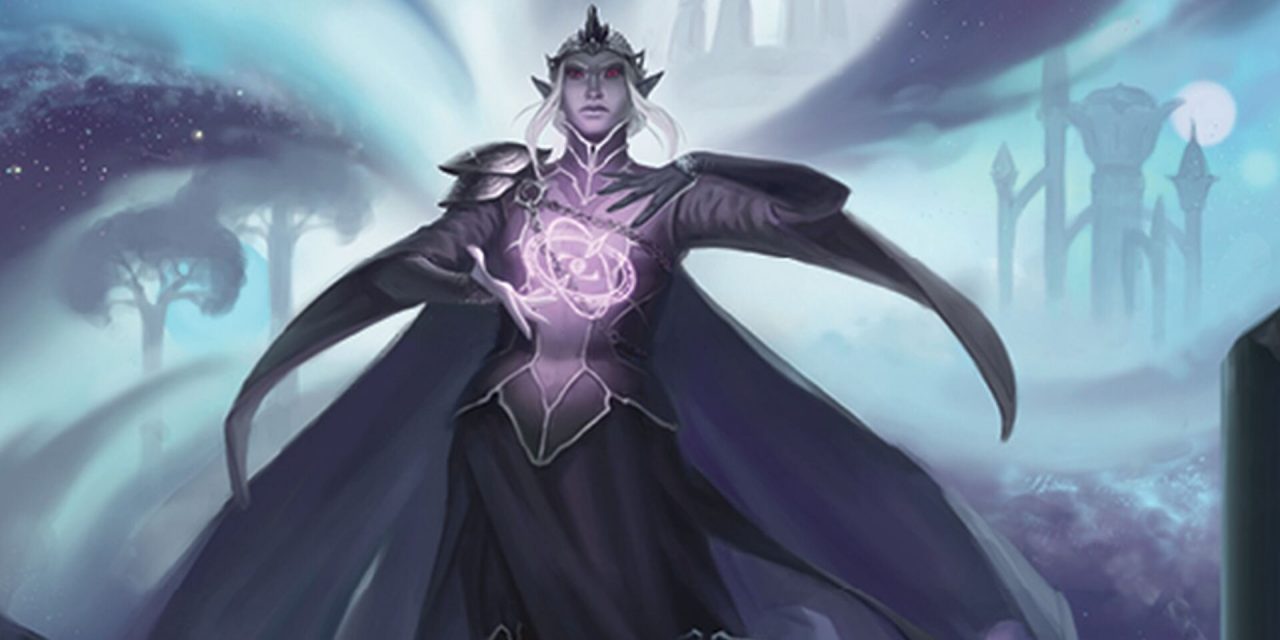Dunamancy and two schools of magic within it were introduced into D&D 5e with the release of the Explorer’s Guide to Wildemount campaign setting sourcebook.
Whether or not you’re a fan of Critical Role, there’s a ton of great and innovative additions to the game in this book. But the addition of Dunamancy, Chronurgy, and Graviturgy in the Explorer’s Guide to Wildemount adds some very interesting new options for spellcasters.
Dunamancy: The New Schools of Magic
The Explorer’s Guide to Wildemount introduces Chronurgy, Graviturgy, and Dunamancy into the game. Naturally, you’ll want to make sure that your DM is ok with using these in your game before rolling up a character, but these options actually blend perfectly with the existing schools of magic in 5e.
Let’s take a closer look at each of these types of magic and talk about some benefits that Wizards specializing in them get.
Dunamancy
Dunamancy is less of a school of magic in that it is not directly able to be specialized in by Wizards who wish to uncover its secrets.
It is, however, an incredibly powerful and primal magical tool that forms the backbone of Chronurgy and Graviturgy magic in addition to the abilities of the Echo Knight Fighter subclass. Within these subclasses, the user manipulates Dunamis, the raw magical energy of potential, to incredible effect.
Dunamancy is the study and manipulation of the force of potential. This makes it a type of magic that understands, works with, and bends anticipation. As a type of “parent” magic to the schools of Graviturgy and Chronurgy, it certainly bears mentioning when discussing the magic of Explorer’s Guide to Wildemount.
Fans of Critical Role, in which season 2 takes place in Wildemount, will no doubt recognize Dunamancy magic from the show.
Chronurgy
Chronurgy magic focuses on the manipulation of time. To the wizards who prefer to get all “timey-wimey” with their talents, reality is what they make it out to be!
At 2nd level, the Chronurgy Wizard is able to add their intelligence modifier to their initiative rolls and force rerolls on attacks, ability checks, and saving throws.
As they level up, these Wizards are able to put creatures in a momentary stasis (as a type of miniature Hold Person spell), delay their spells’ effects by storing them in a small bead to be used later, and ultimately guarantee the success or failure of particular rolls (at the cost of their own exhaustion).
Graviturgy
Graviturgy magic focuses on harnessing the power of gravity to benefit them and their party while wreaking havoc on their enemies. There’s some very interesting mechanics to Graviturgy spells that can very easily form the backbone of some nasty combinations with your party members.
Right out of the gate at 2nd level when a Wizard specializes in Graviturgy, they get the ability to alter the weight of objects and creatures with the Adjust Density feature. With this, they are able to halve or double the weight of their targets. Halving the target’s weight makes them faster and more agile, but physically weaker. Doubling the weight, naturally, has the opposite effect.
As the Graviturgy Wizard continues their research, they gain the abilities to move others on the battlefield around, enhance gravity to increase their allies’ attack damage, and even potentially stop all enemies in a 30 foot range of them in their tracks with the Even Horizon ability.
Dunamancy In and Outside of Wildemount
Within the lore of Wildemount, Dunamancy is almost exclusively understood by the Kryn Dynasty who take great care to guard its secrets from the world outside their borders.
Beyond the Dynasty, some elements of Dunamancy may have leaked into the larger world, but would most often go unnoticed. After all, this is a powerful and invisible magical force that deals with the nature of reality.
Such a power is bound to be esoteric and those who claim to know of it might be looked at by other Arcane practitioners with some level of confusion or concern.
However, for those who wish to incorporate Dunamancy into their game but are not playing in the Wildemount setting, there are still interesting ways to incorporate it.
As with anything, the DM and players should work together to find a way that incorporates this fascinating type of magic into the game in an interesting way. While Dunamancy in Wildemount is closely-guarded by the Kryn Dynasty, your game might have it as a more-known or reasonably well-studied magical discipline.
However, this is still very powerful magic that may only be made available to members of certain ranking within certain organizations. This could very well lead to interesting sub-quests for Arcane characters or tie them to such influential organizations.
Conclusion – Dunamancy and the Schools of Magic in Wildemount
I have a deep love for the distinct schools of magic in D&D 5e. The Dunamancy options added in the Explorer’s Guide to Wildemount add a very unique element to the mix of already well-established magic schools.
Dunamancy and the schools of Graviturgy and Chronurgy feel unique but not so set apart from the other established schools that it feels shoehorned in.
I still have yet to play a Wizard again since the release of Explorer’s Guide to Wildemount, but I’m particularly eyeing the Graviturgy school, personally.
Have you used any of the Dunamancy magic options yet? Planning to? I’d love to hear your thoughts! Let’s talk about it in the comments!
If you haven’t picked up the Explorer’s Guide to Wildemount yet, you can get it by clicking here!









